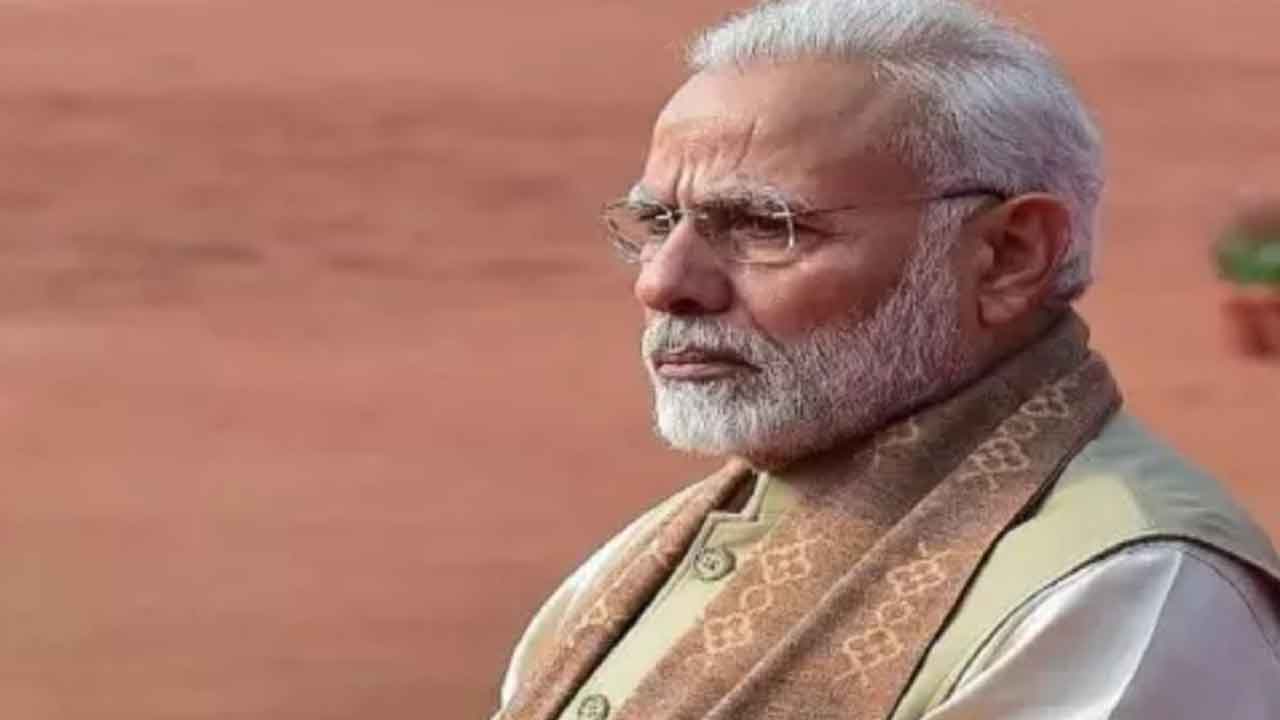Undoing 60 Years In Just 6”? Look At What India Achieved In Those 60 Years
Mumbai: Since Narendra Modi came to power in May 2014, it has become a tiresome routine for both BJP leaders and sections of the Indian people and the media to blame “60 years of Congress rule” for everything that is wrong with India. PM Modi, spearheading this campaign, surpassed himself by writing a signed article on Saturday under the headline, “Undoing 60 years in just 6”.
That he wrote this with utter disregard to official statistics is breathtaking in its brazenness. That he chose to publish it the day after the Government acknowledged the last quarter’s GDP growh rate at 3.1% to be the lowest in eleven years, demonstrates a recklessness that is stunning.
This narrative was first whipped up by the then Prime Ministerial aspirant Narendra Modi in the run up to the 2014 Lok Sabha elections. The campaign, backed by big money, gripped the imagination of many and since then it is used as an argument by these sections to belittle not just the Congress, India’s oldest political party, but also the achievements of those 60 years.
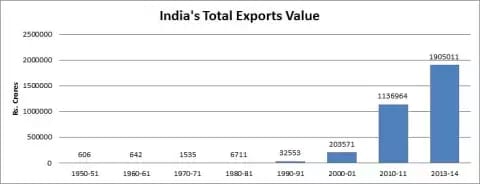 Even some opposition leaders, notably the BSP chief Mayawati, have found it convenient to take up the refrain and raise the bogey of 60 years and Congress policies.
Even some opposition leaders, notably the BSP chief Mayawati, have found it convenient to take up the refrain and raise the bogey of 60 years and Congress policies.
Barely a week before the Prime Minister’s signed article on Saturday, she had tweeted that the real culprit for the plight of migrant workers were policies pursued by the Congress which “failed to create employment opportunities” for the people in its long stint in power.
According to her, if successive Congress governments had done proper “arrangements” for the livelihood of people in every state, the migrants wouldn’t have to migrate to other places looking for jobs.
But is her criticism fair? Or does BJP’s bogey of “60 years vrs 6” have any merit?
Since independence, the Congress has been in power for around 55 years at the Centre. Let us check how much truth is there in the statement that “60 years of Congress rule” ruined India.
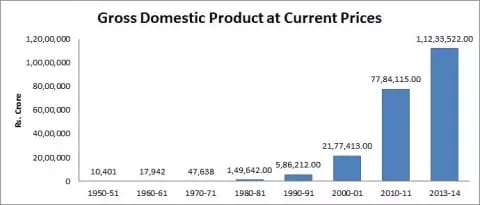 India’ GDP from 1950-51 to 2013-14
India’ GDP from 1950-51 to 2013-14
As a country, India is still very young and just 73 years old. Before 1947, it was a geographical area with hundreds of small kingdoms and principalities. It was only after 1947 that these small kingdoms and principalities were united to form the country called India. British colonialists exploited the resources of India for too long and most of these royals made truce with the British and continued with their extravagant lifestyle. When India got independence from colonial rule, the new government had to start from scratch.
The first census data of independent India (in 1951) shows the country’s population was 35.9 Crore. It was estimated that around three-fourth of the population was poor then. But although the population exploded to an estimated 133 crore in 2019, poverty has declined from nearly 75% of the then small population to 21.9% of today’s 1.3 billion. This has been a signal achievement that the critics tend to overlook.
This decline in poverty levels happened gradually, over a long period of time, with the continuous efforts of successive governments. If governments of various states had worked proactively, this number could have been lowered further.
In fact the latest data published by Niti Aayog show that several large states where Congress party has not been in power for long have not really performed better in reducing poverty. In Uttar Pradesh and Bihar, Congress has not been in power for thirty years. There population below the poverty level remains high at 29.43% and 33.74% of the population respectively.
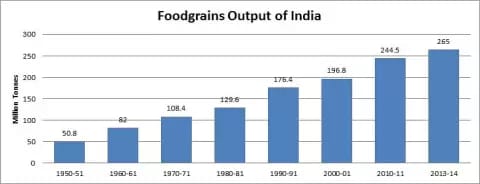 Growth in India’s food grain output (from 1950-51 to 2013-14)
Growth in India’s food grain output (from 1950-51 to 2013-14)
The percentage of population living under poverty line in Jharkhand and Chhattisgarh are even higher at 36.96 and 39.93 percent respectively though in both the states Congress has been in the government for very short spells compared to the BJP. In most states where Congress party was not in power, the percentage of population living Below Poverty Line (BPL) is above the national average and their comparative improvement rate is also slower than in other states.
A World Bank report published in 2018 says: “Looking back at the last 50 years, we note that India’s average growth has accelerated slowly but steadily across sectors – agriculture, industry and services – and become more stable. This is reflected in increasing labour productivity and total factor productivity.”
“In the last five decades, there have been six episodes when growth exceeded 8 percent, touching this high about once in each decade. The only durable episode of high growth, which lasted for five years, was from 2004 to 2008 when growth reached 8 percent in each of these years. India’s long-term economic performance has been impressive.”
“Despite variation around the long-term growth rate, average growth over any continuous 10- year period has steadily accelerated, and has never reversed for a prolonged period. The first phase of growth acceleration lasted from 1991 to 2003, when GDP grew at an average rate of 5.4 percent a year. It marked a growth acceleration of 1 percentage point a year over the previous two decades. A short second phase of unusually high growth followed during 2004–08. During this phase, GDP grew at an average annual rate of 8.8 percent.”
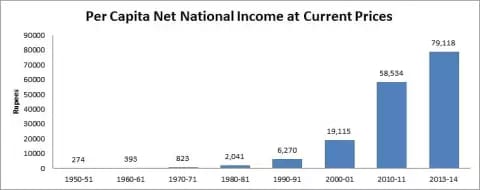 Increase in India’s net per capita income (1950-51 to 2013-14)
Increase in India’s net per capita income (1950-51 to 2013-14)
In fact, since 1950-51, India’s GDP has grown by 107904.25% till 2013-14. (From ₹10,401 Crore to ₹ 11,233,522 Crore). In every sector – agriculture, manufacturing and industry, mining and construction, services, foreign trade and investment and all the sub sectors in these groups – India has achieved major growth since 1947.
Governing a newly created democracy which has a colonial baggage of destruction and plunder of around 200 years is a mammoth task. The founding fathers of India created a strong foundation and the ones came after them added to the process.
Prime Minister Narendra Modi inherited an India with a much stronger economy than what it was after independence, a functional democracy and a nation with entrepreneurial zeal which can compete with the best in the world.
Not to give any credit to the Congress party and other governments including Vajpayee’s for all this is either political opportunism or ignorance of someone unfamiliar with the political, economic and social history of India.
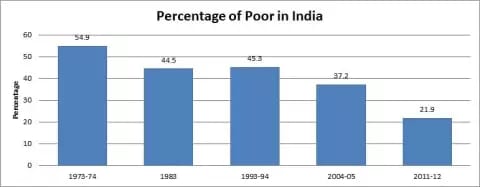 Decline in percentage of India’s poor (from 1973-74 to 2011-12)
Decline in percentage of India’s poor (from 1973-74 to 2011-12)


